Search for Exotic Particles at the NA62 Experiment
Abstract
1. Introduction
2. The NA62 Experiment
2.1. State of the Art
2.2. Experimental Setup
3. Exotic and Forbidden-Decay Searches at NA62
3.1. Heavy Neutral Leptons
3.2. Axion-Like Particles
3.3. Dark Photons
3.4. Rare and Forbidden Decays
4. Conclusions
Author Contributions
Funding
Conflicts of Interest
References
- NA62 Collaboration. Proposal to Measure the Rare Decay at the CERN SPS. Available online: https://na62.web.cern.ch/na62/Documents/Proposal%20spsc-2005-013.pdf (accessed on 10 October 2018).
- Blanke, M.; Burasa, A.J.; Dulinga, B.; Gemmlera, K.; Gori, S. Rare K and B decays in a warped extra dimension with custodial protection. J. High Energy Phys. 2009, 2009, 108. [Google Scholar] [CrossRef][Green Version]
- Isidori, G.; Mescia, F.; Paradisi, P.; Smith, C.; Trine, S. Exploring the flavour structure of the MSSM with rare K decays. J. High Energy Phys. 2006, 2006, 064. [Google Scholar] [CrossRef][Green Version]
- Buras, A.; Buttazzo, D.; Knegjens, R. and in simplified new physics models. J. High Energy Phys. 2015, 2015, 166. [Google Scholar] [CrossRef]
- Blanke, M.; Buras, A.J.; Recksiegel, S. Quark flavour observables in the Littlest Higgs model with T-parity after LHC Run 1. Eur. Phys. J. C 2016, 4, 182. [Google Scholar] [CrossRef] [PubMed]
- Bordone, M.; Buttazzo, D.; Isidori, G.; Monnard, J. Probing lepton-flavour universality with decays. Eur. Phys. J. C 2017, 9, 618. [Google Scholar] [CrossRef]
- ATLAS Collaboration. Search for new phenomena in the dijet mass distribution using pp collision data at TeV with the ATLAS detector. Phys. Rev. D 2015, 91, 052007. [Google Scholar] [CrossRef]
- NA62 Collaboration. The beam and detector of the NA62 experiment at CERN. J. Instrum. 2017, 12, 05025. [Google Scholar]
- Gorbunov, D.; Shaposhnikov, M. How to find neutral leptons of the νMSM? J. High Energy Phys. 2007, 2007, 015. [Google Scholar] [CrossRef]
- NA62 Collaboration. Search for heavy neutral lepton production in K+ decays. Phys. Lett. B 2018, 778, 137–145. [Google Scholar] [CrossRef]
- Döbrich, B.; Jaeckel, J.; Kahlhoefer, F.; Ringwald, A.; Schmidt-Hoberg, K. ALPtraum: ALP production in proton beam dump experiments. J. High Energy Phys. 2016, 2016, 018. [Google Scholar] [CrossRef]
- Holdom, B. Two U (1)’s and ϵ charge shifts. Phys. Lett. B 1986, 166, 196–198. [Google Scholar] [CrossRef]
- Pospelov, M. Secluded U (1) below the weak scale. Phys. Rev. D 2009, 80, 095002. [Google Scholar] [CrossRef]
- NA62 Collaboration. INDEX SPSC DOCUMENTS. 2017. Available online: http://cds.cern.ch/record/2299464/files/Index_SPSC_2017.pdf (accessed on 10 October 2018).
- NA62 Collaboration. NA62 Status Report to the CERN SPSC. 2018. Available online: http://cds.cern.ch/record/2312430 (accessed on 10 October 2018).

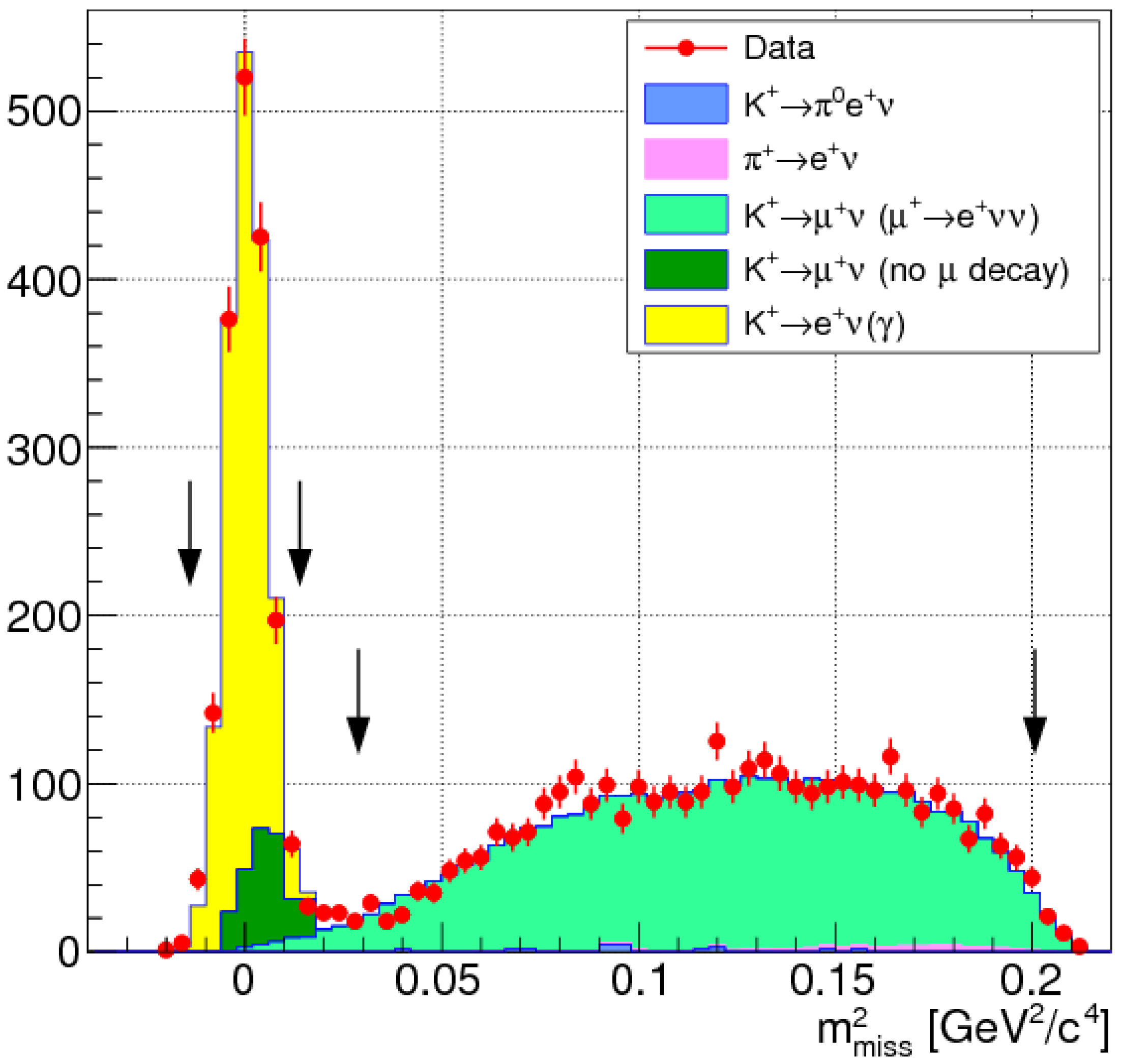
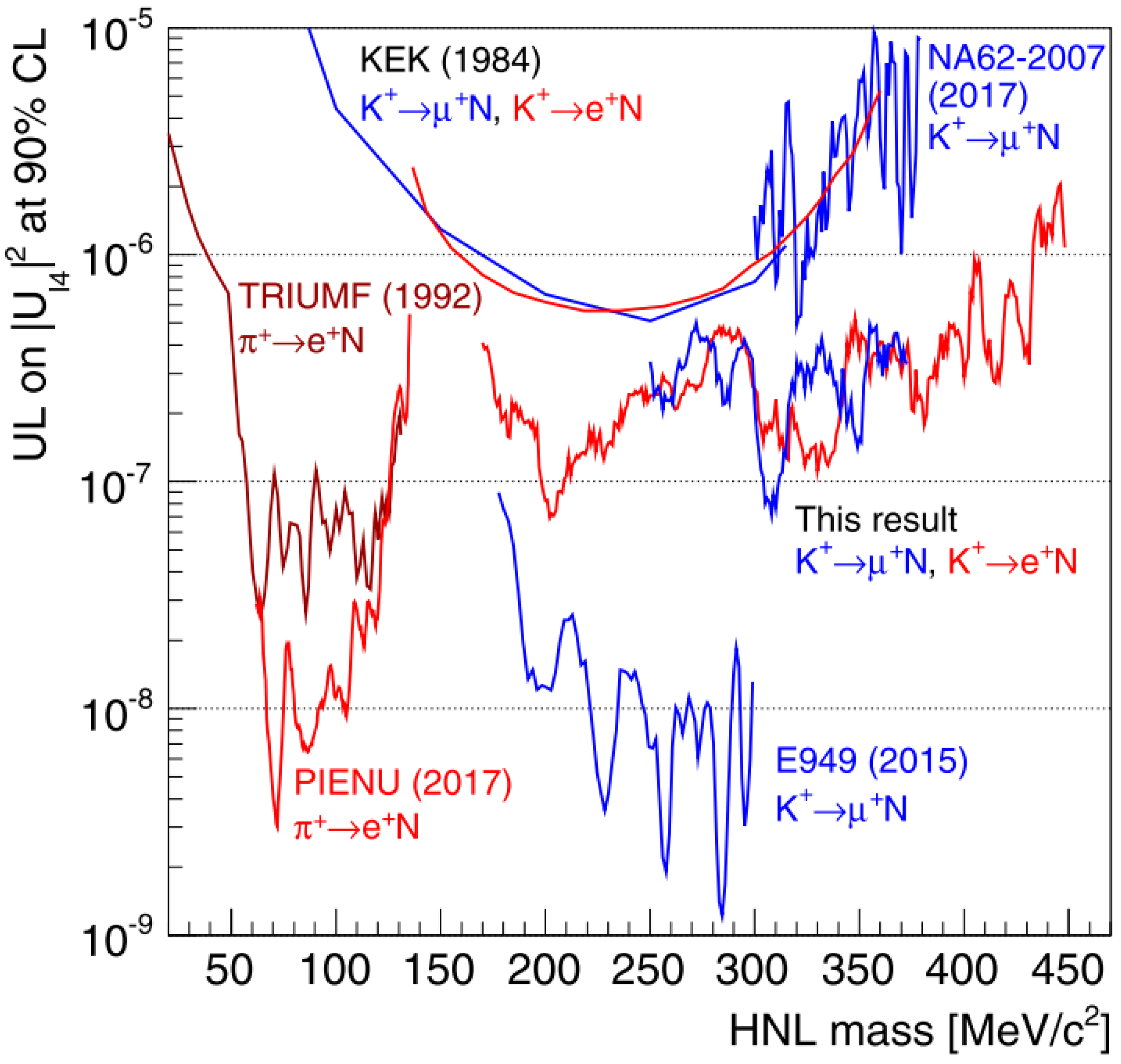
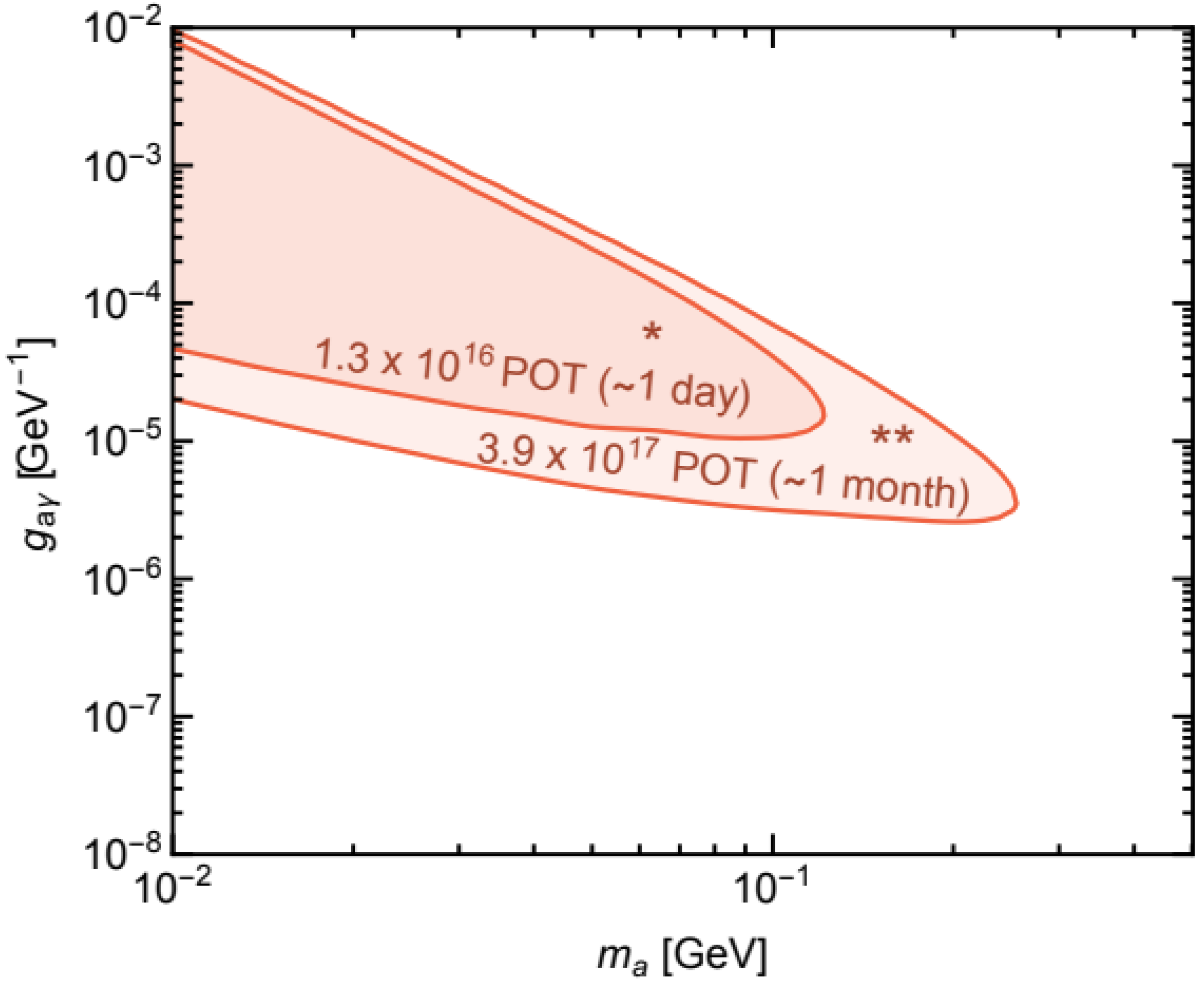
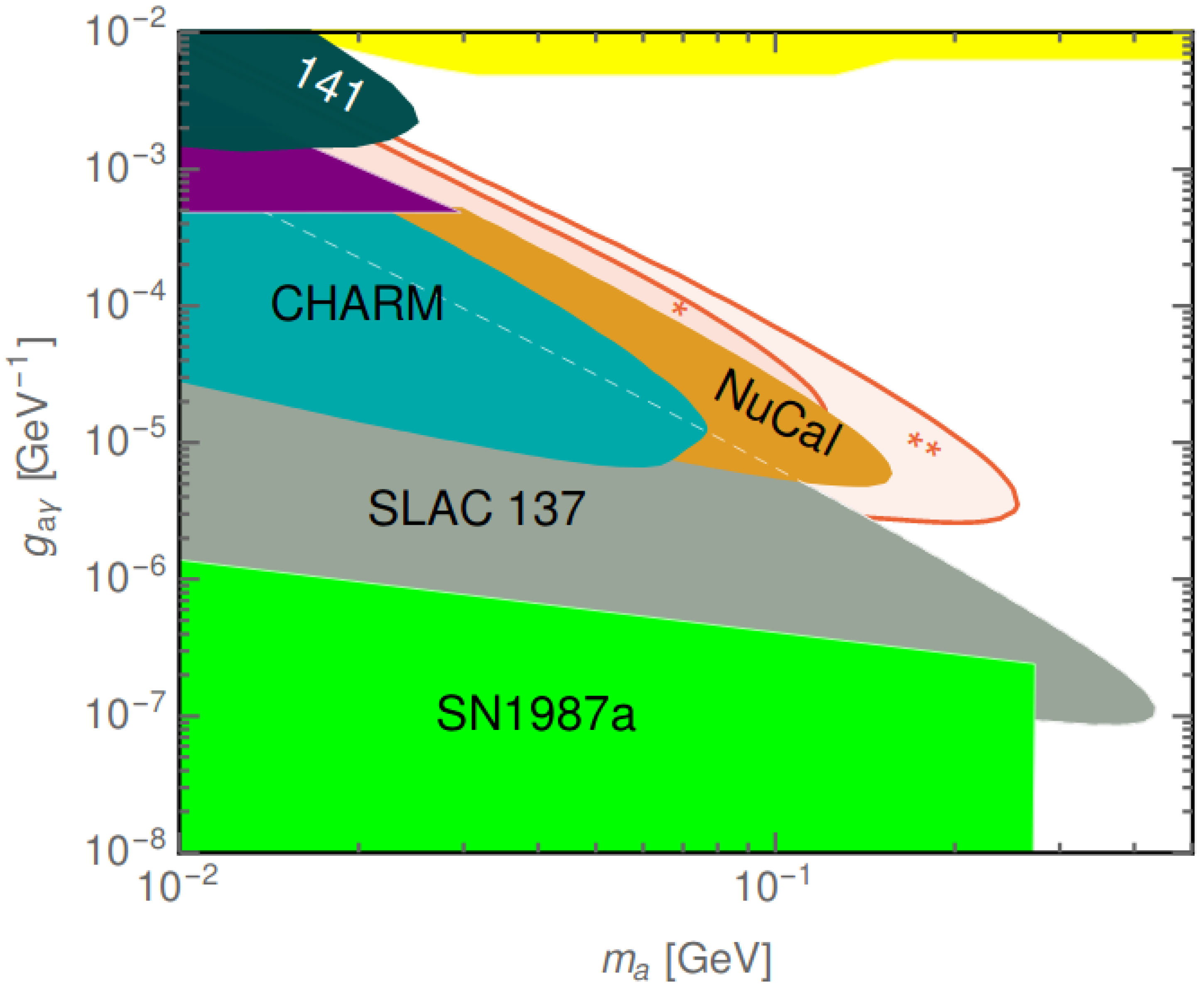


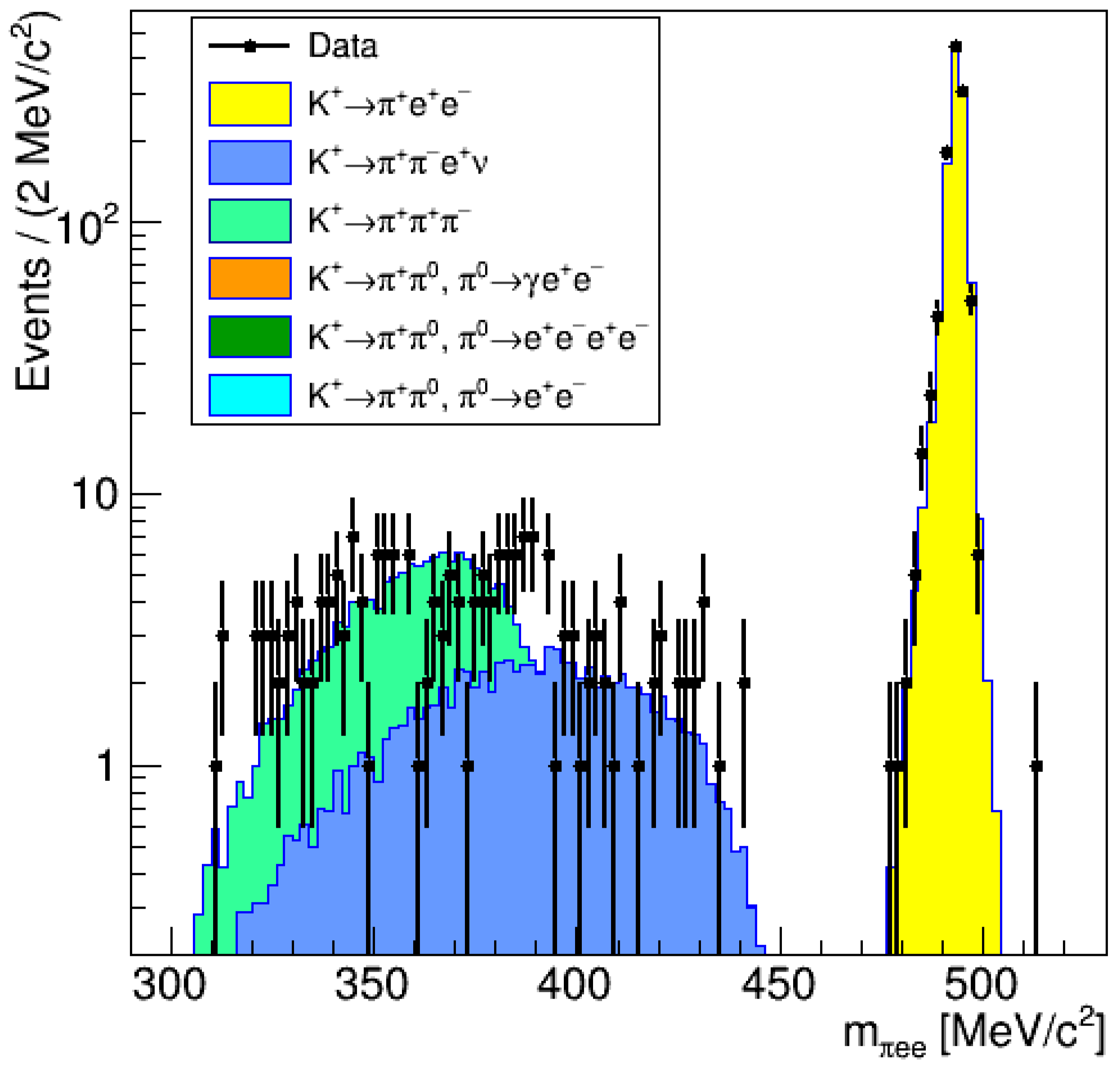

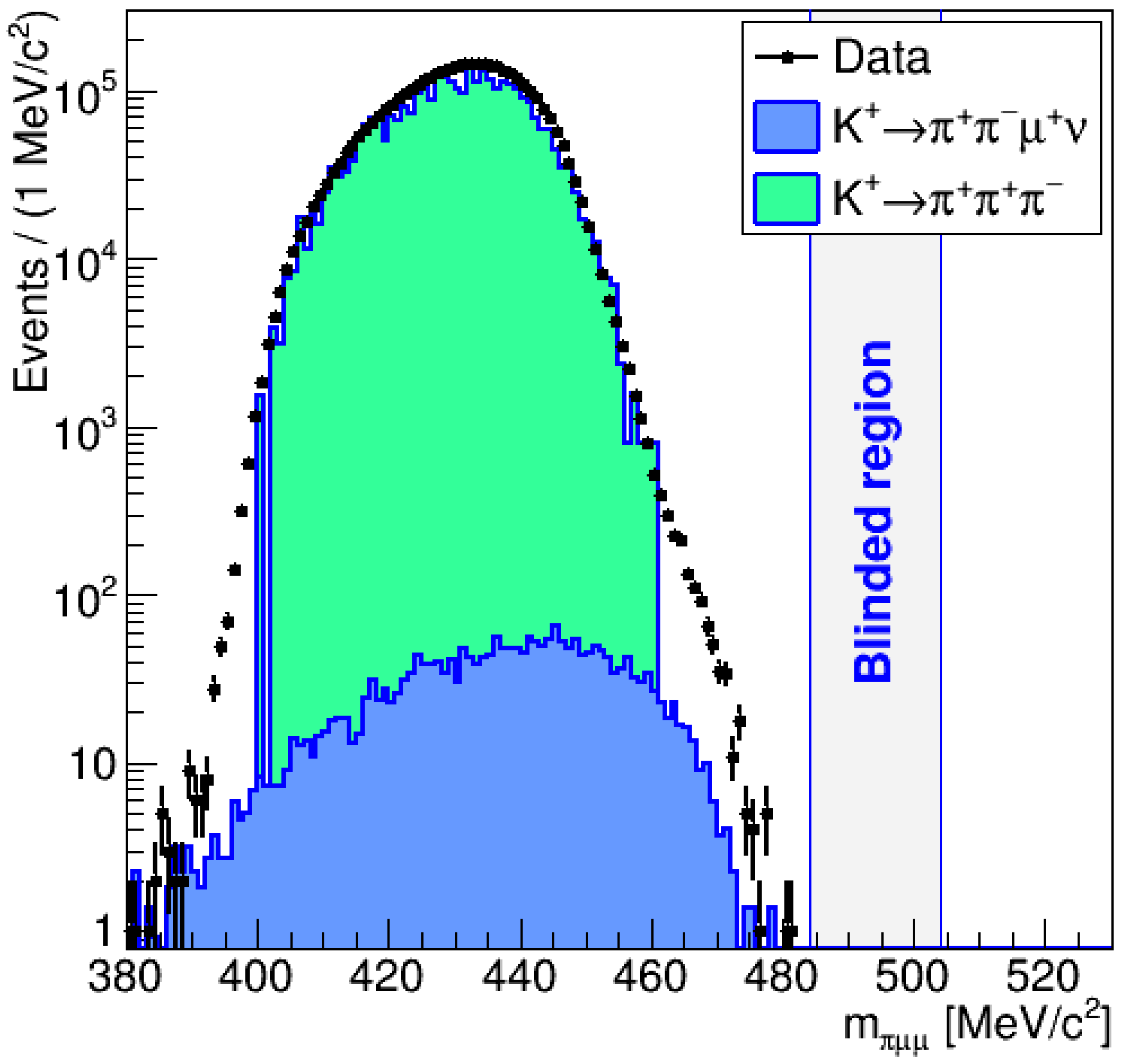
© 2018 by the authors. Licensee MDPI, Basel, Switzerland. This article is an open access article distributed under the terms and conditions of the Creative Commons Attribution (CC BY) license (http://creativecommons.org/licenses/by/4.0/).
Share and Cite
Brunetti, M.B.; Gonnella, F.; Iacobuzio, L.; On behalf of the NA62 Collaboration. Search for Exotic Particles at the NA62 Experiment. Universe 2018, 4, 119. https://doi.org/10.3390/universe4110119
Brunetti MB, Gonnella F, Iacobuzio L, On behalf of the NA62 Collaboration. Search for Exotic Particles at the NA62 Experiment. Universe. 2018; 4(11):119. https://doi.org/10.3390/universe4110119
Chicago/Turabian StyleBrunetti, Maria Brigida, Francesco Gonnella, Lorenza Iacobuzio, and On behalf of the NA62 Collaboration. 2018. "Search for Exotic Particles at the NA62 Experiment" Universe 4, no. 11: 119. https://doi.org/10.3390/universe4110119
APA StyleBrunetti, M. B., Gonnella, F., Iacobuzio, L., & On behalf of the NA62 Collaboration. (2018). Search for Exotic Particles at the NA62 Experiment. Universe, 4(11), 119. https://doi.org/10.3390/universe4110119




